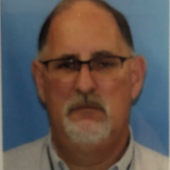Agenda
Please note: all timings are listed in BST, to view start times in your local time zone, please click here.
-
Welcome and introduction by the moderator
- SESSION ONE: The latest global developments
-
Updates on PFAS related OECD work
- OECD synthesis reports on polymeric PFAS
- Past OECD work on polymers of low concern
- Recap of OECD Global Forum on PFAS – what’s next after 20 years of work on PFAS?
-
Managing global PFAS restrictions – how to find the common denominator globally
- Review international instruments addressing PFAS substances
- Review PFAS measures in place in selected jurisdictions
- Review global compliance strategies
-
Q&A
-
Refreshment break
- SESSION TWO: The latest European developments
-
European Commission (EC) update on PFAS work
- EC existing and ongoing actions related to PFAS
- Universal PFAS restriction: ongoing process
- Other recent developments under chemicals policy
-
PFAS and the water sector
- PFAS threat for European water resources and water sector
- The water sector’s struggle to comply with increasingly lower acceptable guideline values
- The way forward: full ban of all PFAS, maximum emission reduction and improved EU regulation to prevent similar chemicals entering the European market
.jpg) Harrie Timmer
Senior Policy Advisor, Vewin (Association of Dutch Water Companies) and EurEau (European Federation of National Associations of Water Services)
Harrie Timmer
Senior Policy Advisor, Vewin (Association of Dutch Water Companies) and EurEau (European Federation of National Associations of Water Services) -
Industry perspective: progress made and remaining concerns
- Securing fluoropolymers supply in Europe to key strategic sectors through manufacturing responsibly and advancing end-of-life solutions: a producer perspective
- Essential use and risk assessment for PFAS
-
Q&A
-
Lunch break
-
Enhesa Product service presentation and platform demo
- SESSION THREE: Analytical test method development
-
PFAS - analytical challenges
- A growing number of PFAS are used in industrial applications and consumer products
- Target methods only evaluate a fraction of the overall PFAS, thus underestimating their significance
- Sum parameter methods help to close the gap between the total PFAS content and the PFAS currently analysable by common target methods
-
EPA’s analytical method development at the Office of Pesticides Programs (OPP)
- Recent research activities related to PFAS in the OPP lab
- Developed analytical methods for PFAS
- Ongoing method developments
- Test results of some pesticide products
-
Q&A
-
Refreshment break
- SESSION FOUR: The transition to PFAS free chemistry
-
Issues of concern across the lifecycle of PFAS and areas for further research
- PFAS alternatives and management of PFAS lifecycle
- Fluoropolymers – risks of pollution from fluoropolymer manufacture, alternatives and waste management, regulation
- Impact of PFAS on waste and wastewater treatment – need to design for recycling, disposal, treatment
-
The fluoropolymer fallacy: when convenience outweighs necessity
- Fluoropolymers are often used out of convenience rather than necessity.
- If you understand the requirements for the material, it is 'easy' to identify an alternative.
- How do we identify the possible alternatives?
-
PFAS-free coatings
- Outstanding properties of PFAS and fluoropolymers
- Fluorine-free mold release coatings for plastics processing
- Fluorine-free easy-to-clean coating for cookware
- Process substitution of gas-phase fluorination
 Ralph Wilken
Head of Division Surface Technologies, Fraunhofer Institute for Manufacturing Technology and Advanced Materials - IFAM
Ralph Wilken
Head of Division Surface Technologies, Fraunhofer Institute for Manufacturing Technology and Advanced Materials - IFAM -
How ChemSec's PFAS guide and Marketplace can assist PFAS substitution
- PFAS guide to help companies map PFAS in their processes and products
- First step towards phase-out
- PFAS alternatives from a variety of innovative producers in ChemSec Marketplace
-
Q&A
-
Refreshment break
- SESSION FIVE: Recent North American developments
-
Moderator
-
US EPA PFAS testing strategy and the overall approach/roadmap
 Jeffrey L Dawson
Senior Science Adviser, Office of Chemical Safety and Pollution Prevention (OCSPP), US EPA
Jeffrey L Dawson
Senior Science Adviser, Office of Chemical Safety and Pollution Prevention (OCSPP), US EPA -
Data Collection on PFAS via the Toxic Substances Control Act (TSCA) and Toxics Release Inventory (TRI)
- More on the PFAS National Testing Strategy
- PFAS Data Reporting Rule (TSCA section 8(a)(7))
- PFAS reporting pursuant to the Toxics Release Inventory (TRI)
-
The Inhance lawsuit and its implications
- US court of appeals has invalidated a TSCA order issued by EPA with respect PFAS manufactured as a byproduct of a fluorination process
- Impact on EPA’s future regulation of PFAS and its authority under TSCA generally to regulate new and existing uses of chemicals under TSCA
-
Q&A
-
Close of conference






.jpg)
.jpg)
.jpg)
.jpg)
.jpg)

.jpg)
.jpg)